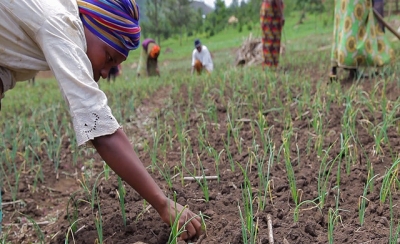New generation of investment plans in Rwanda, Malawi and Ghana

The 2030 Agenda for Sustainable Development is ambitious, but Africa is committed to achieving an equally impressive set of targets even earlier – by 2025. The Comprehensive Africa Agriculture Development Programme (CAADP) is the continent’s policy framework for agricultural transformation, economic growth, food security and nutrition. With the
2014 Malabo Declaration, the African Union broadened CAADP’s scope to include other sectors such as infrastructure, natural resources, land tenure and trade.
In 2017, the Investment Centre helped develop a new generation of National Agricultural Investment Plans (NAIPs) in Rwanda, Malawi and Ghana to guide the expanded CAADP process, coordinating inputs from diverse experts and facilitating public-private dialogue to prioritize future investments. This inclusive approach helped create a sense of ownership among government staff of the NAIPs – crucial for the plans’ long-term sustainability.
While Rwanda’s NAIP builds on achievements from its previous plan, it is “focused less on infrastructure, which the Government has already invested widely in, and more on promoting an enabling environment, such as efficient institutions, knowledge capital, private sector involvement, quality and value addition,
climate-smart agriculture, nutrition and resilience,” said Arnaud de Vanssay, Head of Section, Rural Development in the Delegation of the European Union to Rwanda, which financed FAO’s support. The Investment Centre helped promote a stronger role for the private sector and a greater focus on farm profitability and commercialization to help Rwanda modernize its agriculture sector. In a spirit of innovation, Malawi’s NAIP introduced a matrix comprising four programmes and 16 intervention areas cutting across themes, with a strong emphasis on nutrition, climate change adaptation, marketing, trade, value addition and resilience. The guiding principle is
that no intervention can be seen in isolation. With this new structure, funds can be allocated by both programme and intervention area, making it easier for potential investors to identify priority domains, target groups and technical areas.
“I am confident this new holistic approach will also avoid silos and support coordination among different ministries,” said Readwell Musopole, Deputy Director of Planning in Malawi’s Ministry of Agriculture, Irrigation and Water Development.
The innovation in Ghana was linking investment with policies. This third generation NAIP, consisting of five programmes, clearly spells out the policy tools to be implemented by the Government. To finance implementation, the Government will apply taxes and levies – for example, on food imports – in a way that will not affect consumer prices.
Image by Rwanda Green Fund Investment - ARCOS Network via Flickr (CC BY-ND 2.0)
